Chromatic jet break in GRB 070125
|
GRB 070125 was discovered by the Interplanetary Network (IPN) of GRB detectors at 07:20:45 UT on 2007 January 25. It was a long burst with 70s duration. GRB 070125 is one of the brightest GRBs ever detected, in terms of both its prompt high-energy fluence and its optical and radio afterglows. The isotropic equivalent energy for the GRB is 1E+54 erg. This is the most extensively followed GRB in multi-wave bands in the Swift era. The richness of the data allowed us to derive many important properties of the GRB and place useful constraints on many parameters. Our 95 and 250 GHz observations with CARMA and IRAM, respectively, gave a robust determination of the peak flux density and peak frequency. We had long observations of the GRB at three epochs in the 8 GHz band. These data gave evidence for diffractive scintillations, which gave an upper limit on the size of the fireball after the jet break, until the Sedov-Taylor phase started. This estimate of the fireball size is consistent with the one obtained from the broadband modeling in a constant-density medium. |
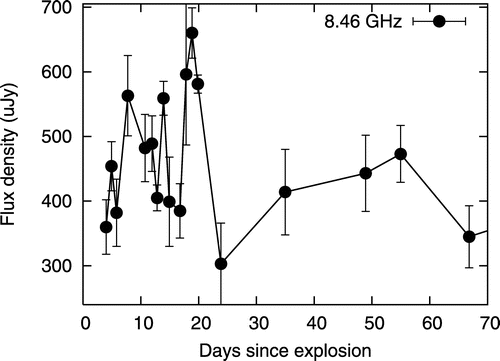
|
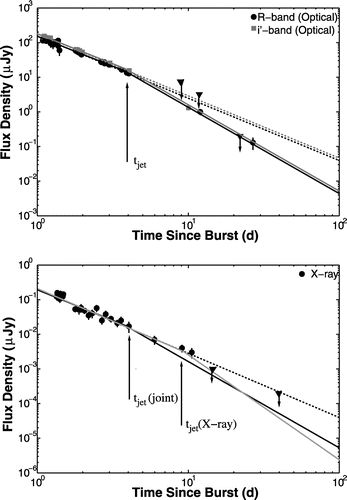
|
One of the most interesting result of this burst is the discovery of chromatic jet breaks in X-ray and optical bands. While our joint fit to optical and X-ray data gives jet break around day 4. If we carry out a independent fit to optical and X-ray data separately, the jet breaks in two bands are not acromatic. In optical band, the jet break is around day 3, whereas it seems to have shifted to day 10 in X-ray bands. We have tried to understand the cause of chromaticity in the jet breaks in both bands. We have examined the inverse-Compton (IC) scattering effect on the GRB afterglow light curve in the X-ray band. In this approach, we force the broadband jet break to be fixed on the day of the optical jet break from our analytical fits, i.e., on day 3.7. We then use these parameters to derive the light curve purely due to the IC effect. Our analysis show strong evidence that IC effects delay the X-ray jet break in GRB 070125. In the pre-Swift era, the X-ray data were not sufficiently well sampled to search for jet breaks, and so collimation corrections were almost exclusively calculated in the optical bands. In the Swift era, with a plethora of well-sampled XRT light curves, we may be missing the jet break due to IC effects in many GRBs. This may explain chromaticity in many of the GRBs. IC effect is more prominent in dense medium. Radio analysis of GRB 070125 clearly indicate that the GRB explosion happened in a dense medium. Thus we suggest that IC scattering is a potential candidate to flatten the light curve, delay the jet break in other Swift events, and explain the absence of a jet break in X-ray light curves of some of the Swift bursts. IC effects are more prominent in a high-density medium. Frequent radio measurements are necessary to measure the circumburst density of the medium. Hence, in the absence of good radio data, one cannot determine the importance of IC scattering. GRB 070125 is unique because it has the richest radio data in the Swift era and a closely spaced X-ray light curve. |
Click in boxes below to see some highlights of our research work.
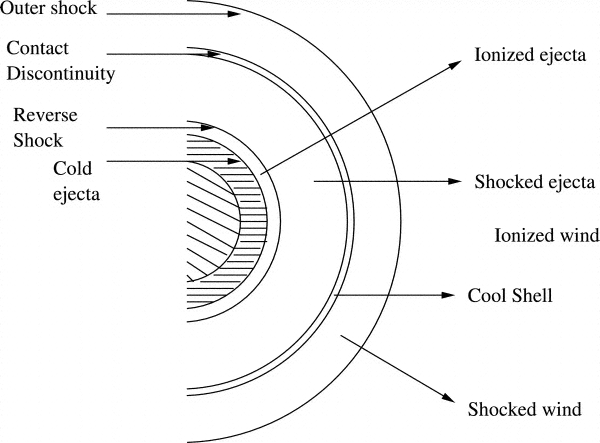
Type IIn supernovae are the most mysterious class of supernovae. Their progenitor stars are a big mystery....
Detail
While reverse shocks are seen in one every 24 optical afterglows of gamma ray bursts, they are much more prevalent in radio afterglows...
Detail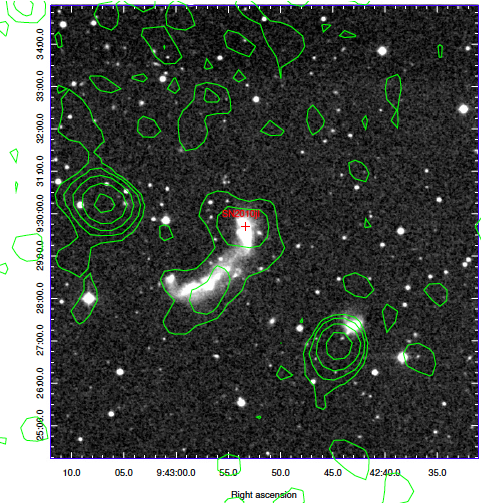
SN 2010jl have revealed a spectacular evolution of the column density from X-ray observations....
Detail
We have studied a catalog of radio afterglow observations of GRBs over a 14 year period from 1997 to 2011...
Detail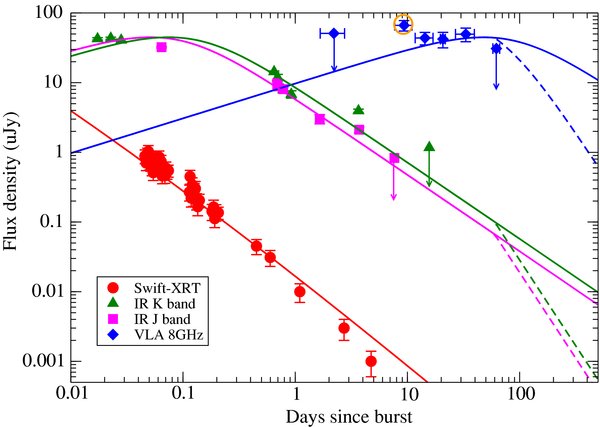
Radio detection of a redshift 8.3 GRB 090423 have revealed the environments of the Universe at such high redshift epochs...
Detail
Inverse Compton scattering can solve the famous mystery of lack of achromatic jet breaks in a subsample of Swift bursts....
Detail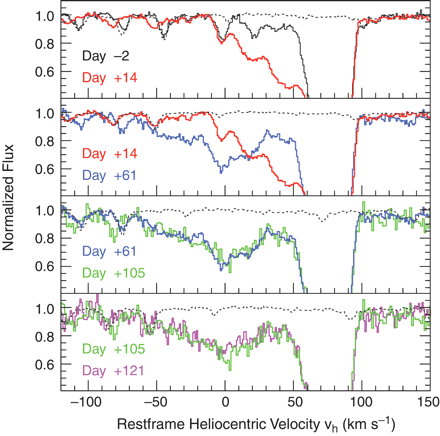
First time spectroscopic evidence of circumstellar matter has been seen in a thermonuclear supernova...
Detail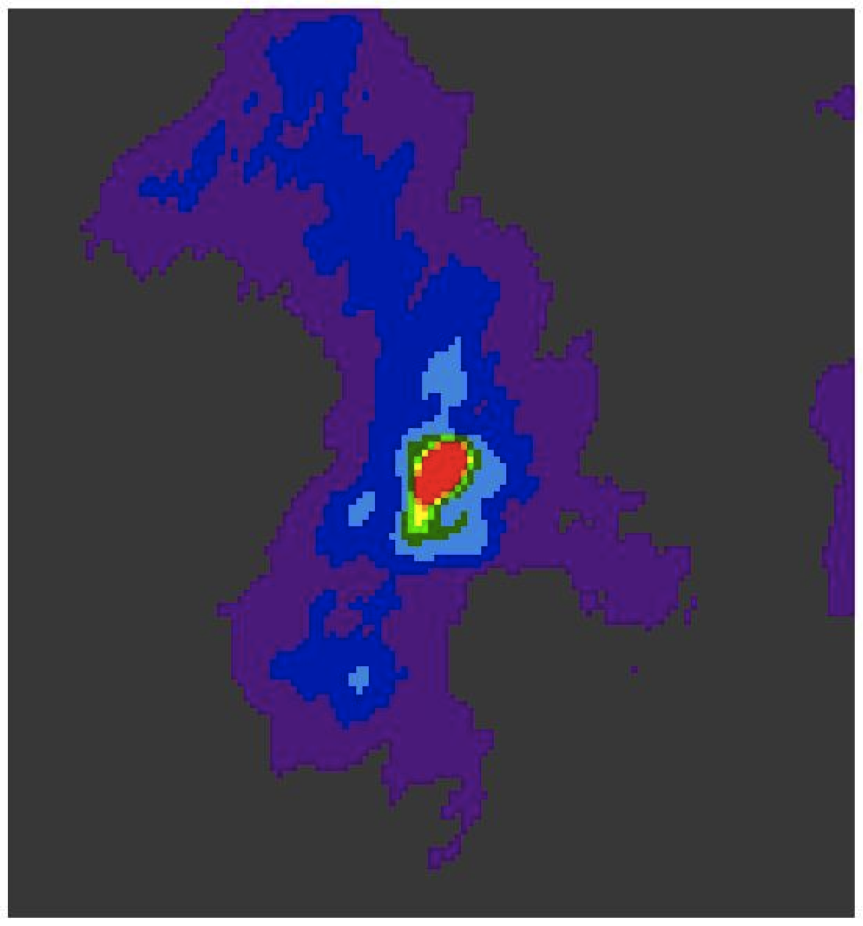
Lowest frequency radio emission at 125 cm has been seen in this most violent Galactic explosion .....
Detail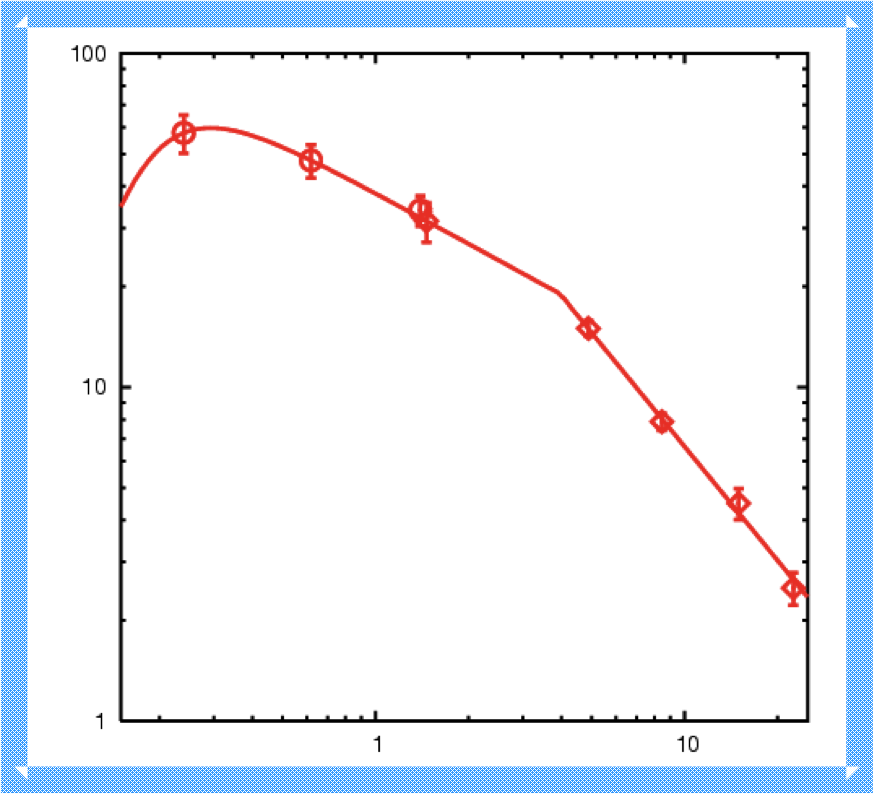
First time direct signature of synchrotron aging was seen in VLA and GMRT observations of SN 1993J.
Detail
